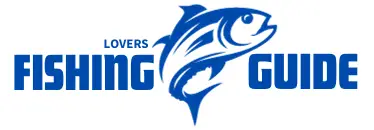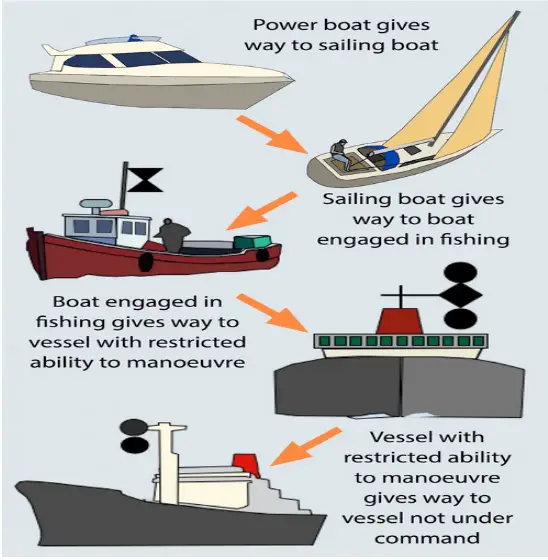You should pass a fishing boat with minimal wake, at a slow speed, and while giving the boat a wide berth. Maintain a safe distance to avoid interfering with their lines or equipment.
Navigating the waters requires not only a firm hand on the wheel but also a conscientious awareness of maritime etiquette, especially when encountering fishing boats. It’s not just about safety; it’s about mutual respect between mariners. Recreational boaters and professional fishers often share waterways, leading to the need for clear rules to prevent accidents and misunderstandings.
Knowing about the best fishing boat and right way to pass a fishing boat not only ensures a smooth sailing experience but also protects the integrity of the waterways and the serenity of the fishing experience for everyone involved. Remembering to pass fishing boats with courtesy can make the water a better place for both casual boaters and serious anglers alike.
The Basic Waterway Rules
When navigating the waters, understanding the basic waterway rules is crucial. These rules, akin to traffic laws on highways, determine how boats should interact with each other to avoid collisions and ensure safety for everyone on the water. Whether you’re an experienced sailor or new to boating, knowledge of these guidelines is essential for a stress-free day of fishing.
The ‘rules Of The Road’ At Sea: An Overview
The ‘Rules of the Road’ at sea are a set of international regulations, formally known as the International Regulations for Preventing Collisions at Sea (COLREGs). They detail the conduct of vessels in various situations and are designed to ensure no two boats come dangerously close to one another. These rules cover aspects such as right-of-way, sailing at night, and operating in limited visibility.
Right-of-way Guidelines : Who Has Priority ?
Right-of-way rules determine which boat has priority when crossing paths. It’s crucial to understand these guidelines:
- A power-driven boat must give way to a sailing boat under most conditions.
- Sailing boat must yield to fishing boats engaged in fishing.
- In narrow channels, boats should keep to the starboard (right) side.
Remember, the key is to always be prepared to yield right-of-way to prevent accidents, even if you have the priority according to the standard rules.
The Importance Of Speed And Distance In Safe Passing
Maintaining a safe speed and distance is vital when passing a fishing boat. Here are some considerations:
- Control your speed to avoid creating a large wake that could destabilize the other boat.
- Pass at a safe distance, ensuring there’s enough room for both boats to maneuver if necessary.
- Use the horn signal if needed — one short blast to pass on the right, two short blasts to pass on the left.
Respecting these aspects ensures everyone’s safety and keeps your boating experience enjoyable and incident-free.
Preparatory Steps Before Passing A Fishing Boat
Understanding the preparatory steps before passing a fishing boat is crucial for ensuring safety on the water. Whether you’re a seasoned mariner or a weekend angler, it’s important to navigate around other boats with caution. These steps will help you pass fishing boats with minimal disruption to their activity and utmost safety for both parties.
Surveying The Surroundings: Water Traffic And Hazards
Before attempting to pass a fishing boat, begin with a comprehensive survey of your surroundings. Here’s what to look for:
- Other boats in the vicinity, especially those that might cross your path.
- Environmental obstacles such as buoys, logs, or shallow waters.
- Weather conditions that may affect maneuverability.
Consider using binoculars for improved visibility and ensure your navigation charts are up to date.
Signal Intentions: Using Horn Signals And Light Indicators
Communication is key on the water. Use these signaling methods:
- Short horn blasts to indicate direction: one to pass on the right, two to pass on the left.
- Light indicators when visibility is low or during nighttime.
It’s important to ensure that your signaling devices are functional and clearly understood by all nearby boaters.
Slow Down And Assess: Fishing Gear And Cast Lines
When passing a fishing boat, be mindful of:
- Fishing lines that may extend from the boat.
- Netting or traps that could be set around the vicinity.
- Bait and fish movements, as fishers may be tracking schools of fish which could intersect your course.
Decelerate well in advance to prevent the wake from disturbing the fishing boat or tangling in their gear. A careful assessment of their activities will allow for a smooth and respectful passage.
Executing The Pass: Techniques For Safe Maneuvering
When navigating crowded waters where fishing boats commonly operate, it’s critical to understand how to safely pass these boats. A successful pass involves more than simply speeding ahead—it requires keen awareness, precise control, and an unequivocal respect for the safety of those aboard both boats. The following segments will guide you through the subtleties of performing a secure and courteous passing maneuver on the water.
Choosing The Safest Side For Overtaking
The rules of the nautical road dictate that you should generally overtake another boat on its starboard side—that is, your port side as you face forward. However, when dealing with a fishing boat, special considerations come into play. Assess the surroundings, noting factors such as the direction of currents, wind, and the availability of space. It’s crucial to observe the fishing boat carefully; lookout for nets or lines that might be extended from either side. Once these factors are taken into account, select the side that poses the least risk for entanglement or disruption of the fishing operations.
Maintaining A Clear Line Of Sight With The Fishing Boat
Prior to and during your pass, it is essential to maintain a clear line of sight with the fishing boat. Operating with an unobstructed view ensures that you can react to any sudden movements or changes made by the fishing boat. It’s advisable to initiate communication with the boat’s captain if possible, signifying your intention to overtake and confirming a safe path. A simple hand signal or radio communication can greatly reduce the risk of misjudgment or collision.
Navigating The Wake: Minimizing Turbulence Impact
As you approach the fishing boat’s wake, throttle control becomes paramount. Your aim is to minimize the impact of turbulence on both your boat and the boat being overtaken. A slow and steady approach helps here. Gather momentum prior to reaching the wake and once at the point of crossing, reduce speed to lessen bounce and discomfort. Simultaneously you should steer your boat at an angle to the wake, cutting through smoothly, thereby reducing rolling and potential loss of control.
Remember the impact your wake can have on the fishing boat. Maintain a speed that ensures your wake is minimal and manageable for the other boat. Proximity, when overtaking, should be ample enough that your wake does not cause the fishing boat undue rocking or interfere with their lines.
Post-passing Protocol: Ensuring Ongoing Safety
Once you have successfully maneuvered your boat past a fishing boat, your responsibility towards safety doesn’t end there. Ensuring ongoing safety is paramount for both your boat and the fishing boat you just passed. Here are pivotal steps to follow post-passing.
Regularly Check Behind For Fishing Boat’s Stability
Continually monitoring the fishing boat’s stability is crucial. After passing, make it a habit to regularly glance back or use your instrumentation to keep an eye on the fishing boat’s situation. This vigilance allows you to react promptly if the boat you passed shows signs of distress or altered course that may impact safety.
Verifying Safe Distance Post-pass
Communication is the linchpin of maritime safety. Once past the fishing boat, it is advisable to ensure sufficient clearance. Make use of radio communication, if available, to confirm with the fishing boat’s captain that they acknowledge and are comfortable with the distance between your boats. This proactive approach minimizes confusion and the potential for accidents.
Adjust Speed And Course As Necessary
Your boat’s wake can cause significant impact on smaller fishing boats. Post-passing, be prepared to adjust your speed and course to mitigate this effect. Responsive actions might include slowing down or making minor steering adjustments to reduce wake turbulence. Keeping any changes smooth and gradual is key to maintaining stability for both your boat and the fishing boat.
FAQs For How Should You Pass A Fishing Boat
How do boats pass?
A boat that has the wind on its starboard (starboard) side has the right of way. A boat that has the wind on the port (left) side must give way. When both boats have the wind on the same side, the windward (upwind) boat must give way.
What Is The Correct Way To Pass A Boat?
To correctly pass a boat, approach at a safe speed and distance, signal your intentions, steer to the starboard side, and proceed with caution, keeping a lookout for any obstructions or changes in the other boat’s course.
How To Safely Get On A Boat?
Ensure the boat is stable before boarding. Use the dock for support while stepping onto the boat. Maintain a low center of gravity as you move. Hold onto something stable as you get settled. Always wear a life jacket for safety.
Final Touch
Navigating the waters near fishing boats is more than courtesy; it’s safety. Remember to slow down, stay alert and prioritize clear communication. Properly passing a fishing boat ensures everyone enjoys their time on the water. Take these tips on board for a smooth sailing experience.
Happy boating!


